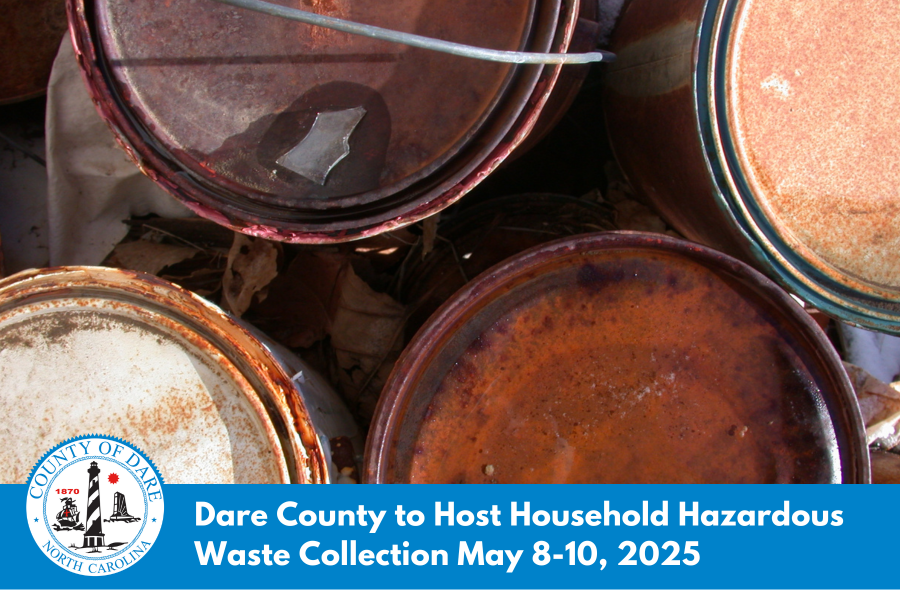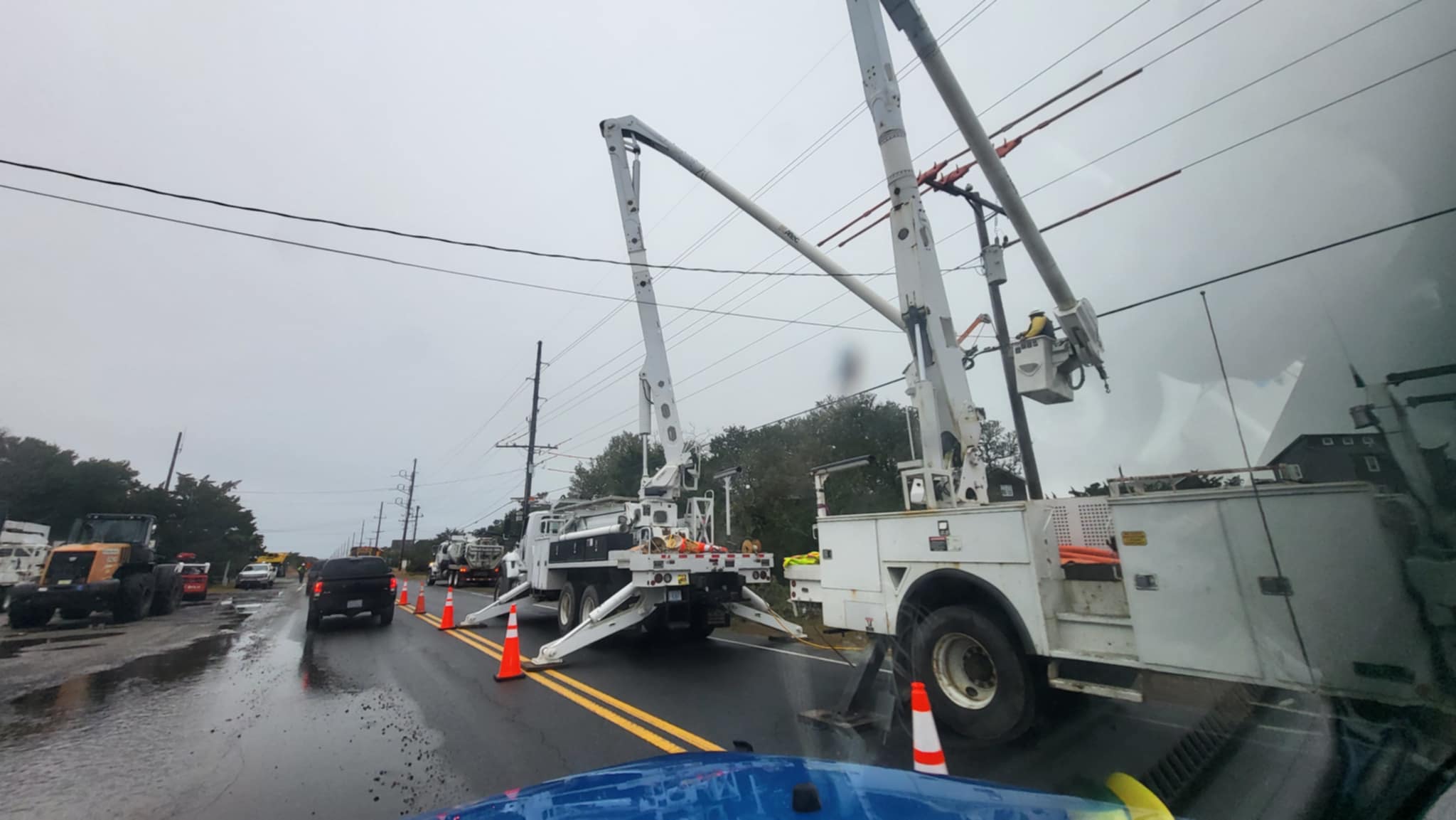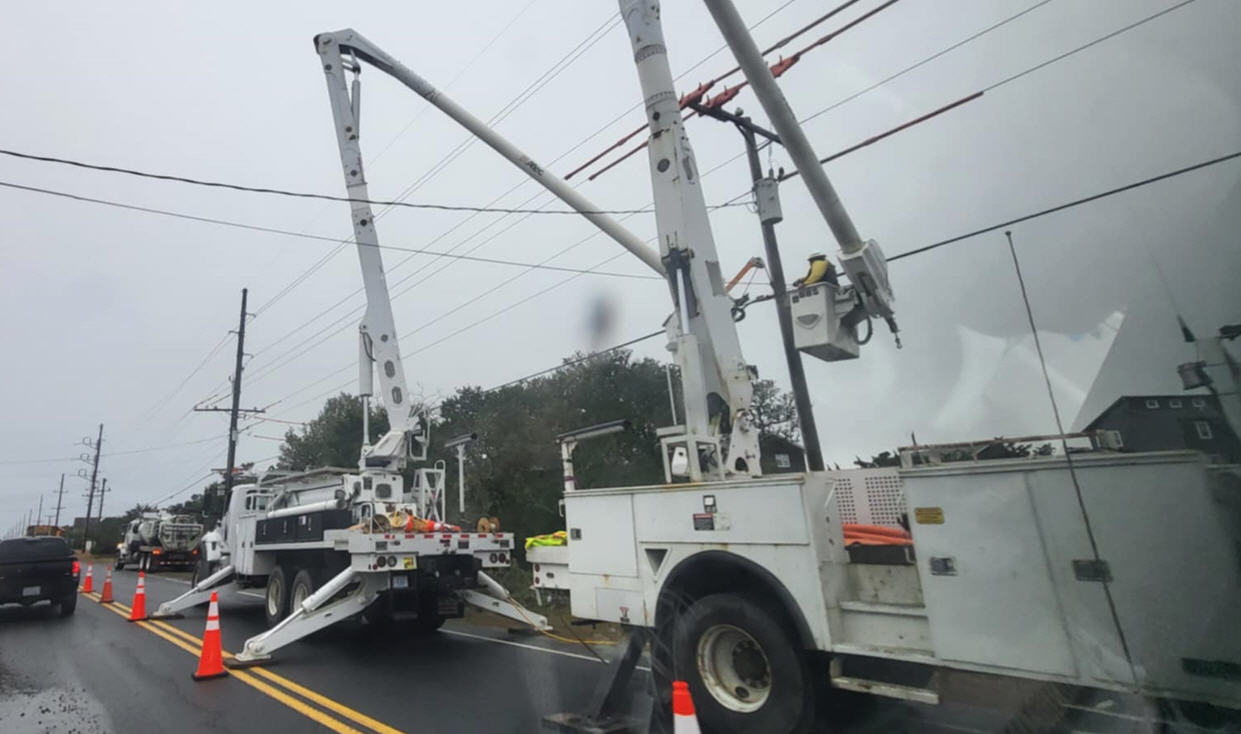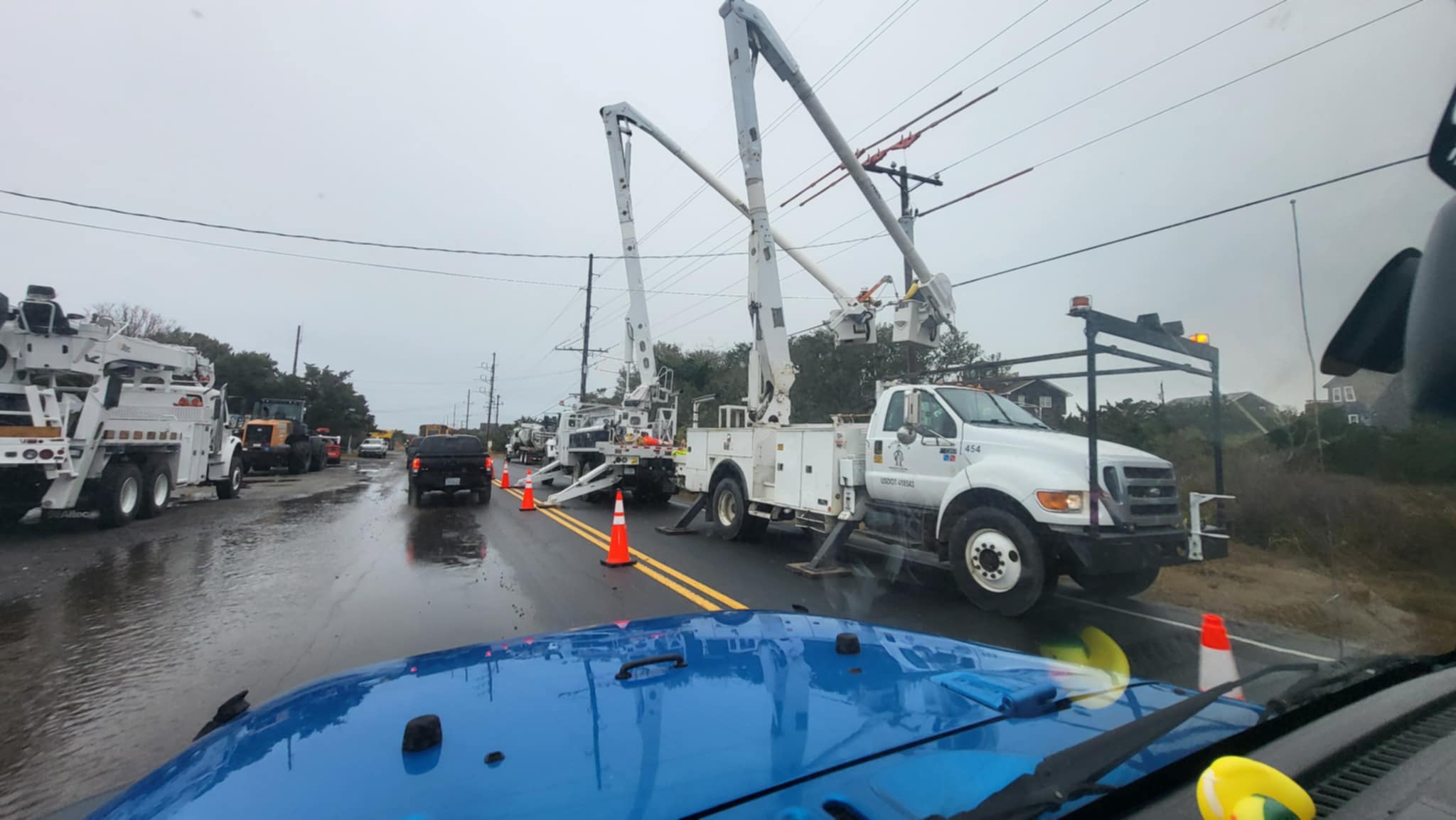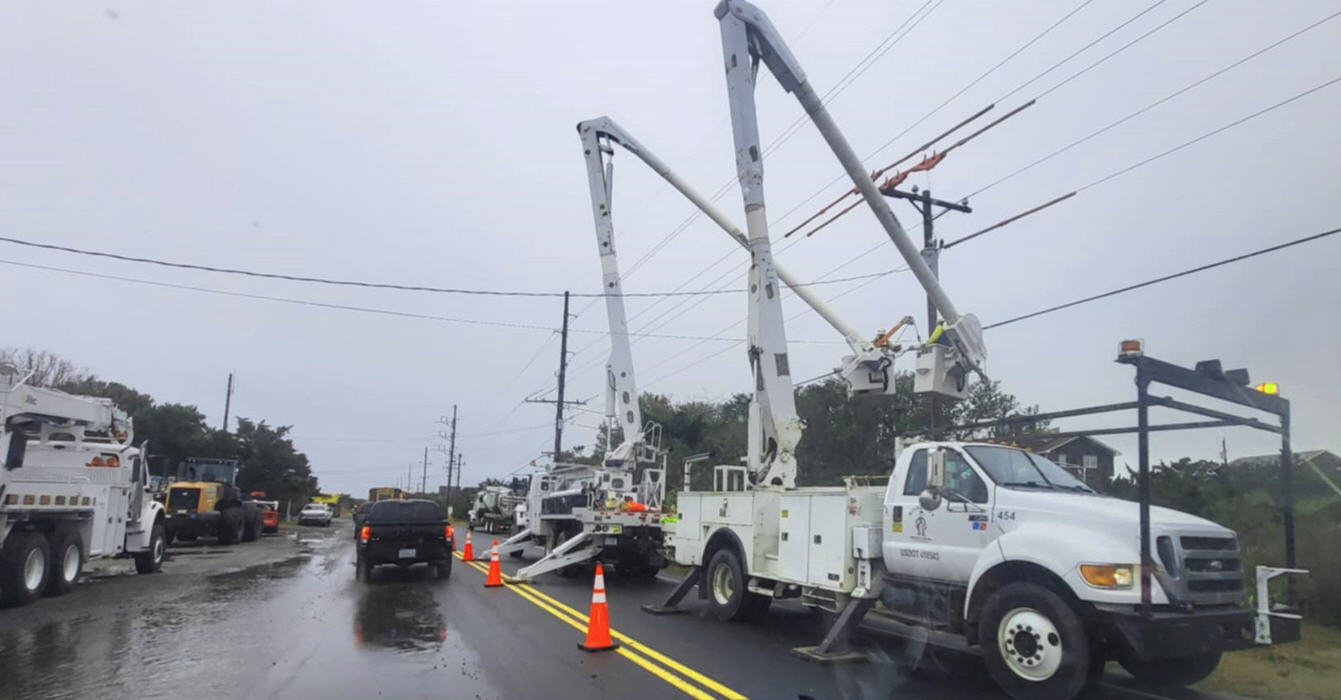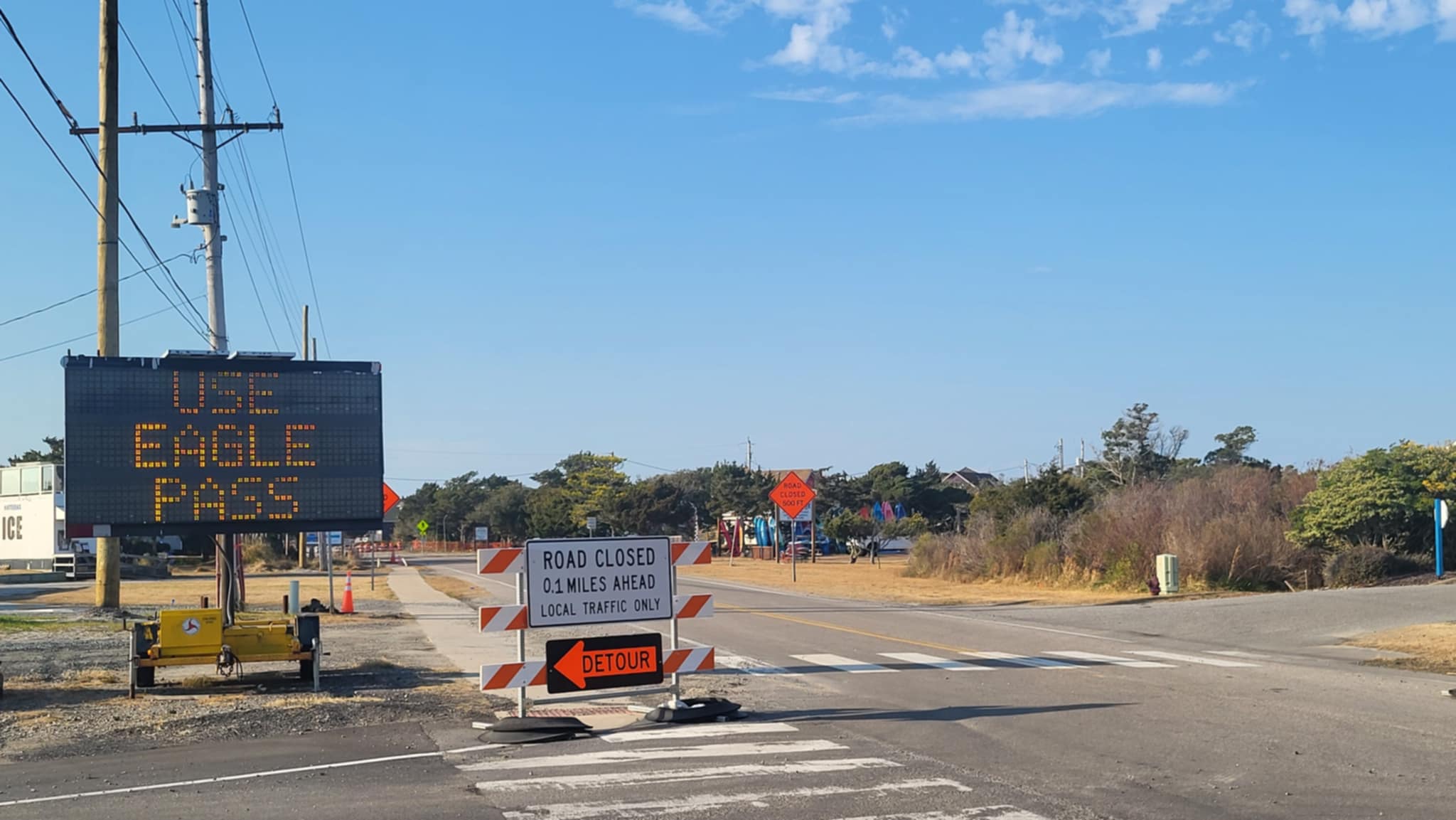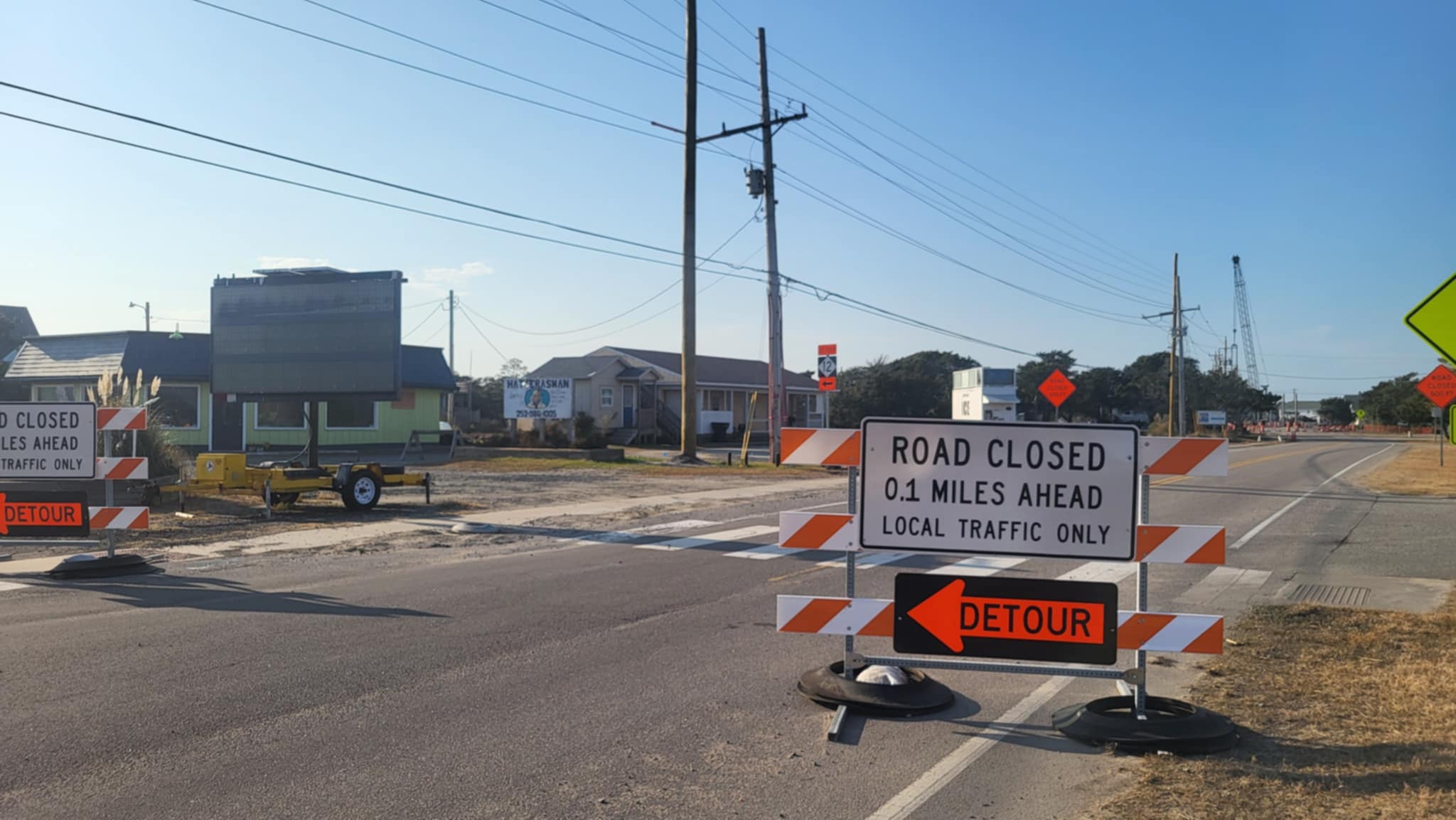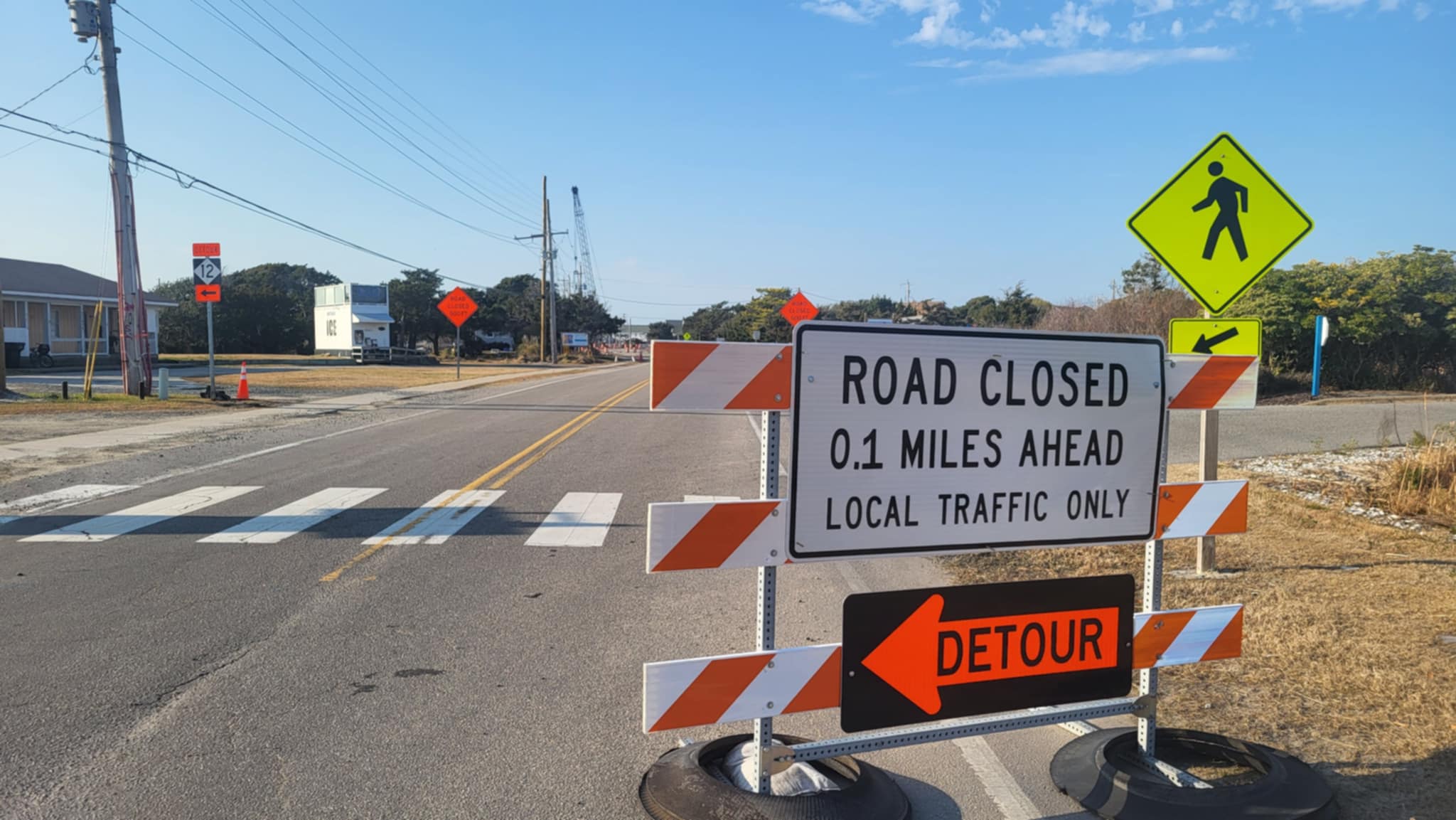New flood mapping preview tops busy Board of Commissioners meeting By IRENE NOLAN
At its meeting on Monday evening, June 20, Dare County’s Board of Commissioners got a presentation on the county’s long-awaited new flood maps that will be released to the public on Thursday, June 30.
In addition to the flood mapping information, the board took action to support a study of a multi-use pathway in Frisco and Buxton, hired a contractor to help with permits for dredging Hatteras Inlet, and supported the Tourism Board in a dispute over an auditor’s report.
Steve Garrett of the North Carolina Flood Plain Mapping Program reviewed with the commissioners the process that is about to begin to revamp the county’s flood maps, which were last updated about 10 years ago.
As was expected, Garrett’s brief preview of the new maps confirms that they will bring some much needed good news to many Dare County property owners.
“The good news is that a lot of properties are coming out of the flood zones,” said Dare’s planning director, Donna Creef.
Currently, she said, property in Dare County now falls into one of three categories —
VE — which is high risk, as in oceanside locations
AE — which is still water flooding, as in soundside locations
X — in which no flood insurance is needed
Garrett said that unincorporated Dare County, which includes Hatteras Island, has had 1,800 structures in the high-risk VE category, and that number will be reduced to only 124. The county has had almost 13,000 structures in the AE zone, and that will come down to about 8,500. The others will move, perhaps into the X zone.
In addition, the county will see two new zones — AH, which will apply to the area between the highways that floods in Kitty Hawk, and AO will apply to some areas that are subject to shallow flooding. The AO zone will include 893 structures countywide.
Garrett, who noted that the technology available for mapping is vastly improved in the past 10 years, noted that the new maps will not become effective for 18 to 24 months, which is longer than some property owners will want to wait for a better rating.
“We would like that process to be shorter, but there’s nothing we can do about it,” said Creef.
After the maps are made public, there will be a period during which property owners can view them. Then there will be public meetings in all of Dare’s communities, and the meetings will be followed by a 90-day public comment period and an appeal process.
Once the maps are made public, they can be viewed digitally through the state mapping program’s website, which is http://fris.nc.gov./fris/.
Dare County will make a videotape of Garrett’s presentation available to the public close to the June 30 release date. The video will help property owners understand how to view their properties.
TOURISM BOARD
Among many other agenda items, the Commissioners discussed an audit of the Dare County Tourism Board that was requested by state Sen. Bill Cook and released by state auditor Beth Wood on March 16.
The Tourism Board was created by the General Assembly in 1991 and is funded by a 1 percent occupancy tax and a 1 percent tax on prepared foods and beverages. Seventy-five percent of the money is used for promotion of tourism and administrative costs, and 25 percent is used for “services or programs needed due to the impact of tourism on the county” — the board’s restricted special revenue fund.
The Board consists of 13 members, appointed by the Board of Commissioners. Expenditures require the approval of the county commissioners.
The report noted that the Tourism Board spends its restricted fund money in accordance with its interpretation of the enabling legislation but that is should seek “clarification” from the General Assembly on the intent of the restrictions on expenditures.
At the time of the audit, Lee Nettles, executive director of the Outer Banks Visitors Bureau, defended the expenditures of what he estimated to be about $9 million in the past 25 years that has been “reinvested in the community.” Nettles disagreed that the law needs more clarity.
Bob Woodard, chairman of the county Board of Commissioners, said the audit item was placed the board’s agenda for discussion at the request of Commissioner Beverly Boswell.
“I feel like we should clear up the language and verbiage,” said Boswell at last evening’s meeting. “There is not a target on the Tourism Board…We need to be very careful as to how (taxpayers’) money is spent.”
The other six commissioners clearly did not agree with Boswell.
Commissioner Allen Burrus of Hatteras village has served on the Tourism Board and said he found them “to be very fair.”
What some people see as “looseness in the law,” he said, can also be viewed as the ability to accommodate such changes as the rise of the popularity of kiteboarding and sporting events.
“Why do we want to mess up something that’s working well?” Burrus asked.
“If it ain’t broke, don’t fix it,” added Commissioner Jack Shea.
“I agree,” said Commissioner Margarette Umphlett, adding that “flexibility was built into the legislation purposefully.”
“Tourism is a business and it’s expensive,” said Commission vice-chairman Wally Overman, who noted that Dare spends much less promoting tourism than such destinations as Virginia Beach and Myrtle Beach. He also noted the growth of tourism in Dare from $264 million in 1992 to $1.02 billion in 2014.
“What concerns me about sending it back to the legislature is their penchant for standardism,” he added. “Dare County’s legislation is much more equitable to everyone than the so-called standard legislation.”
“We ought to be able to do what we want to do in our county without the legislature telling us how to spend our funds,” Woodard said. “The ultimate authority rests with the current board.”
Warren Judge recalled Dare County in 1991 and how the men and women in the lodging and restaurant industry came together to support the occupancy and food and beverage tax if they could “have a say-so in how the money was spent.
HATTERAS INLET
At its last meeting, the board approved a request from county manager Robert Outten to put out a RFQ — or request for qualifications — for a firm to obtain permits for long-term dredging of Hatteras Inlet.
Five contractors responded, and last evening the commissioners voted unanimously to approve Coastal Planning and Engineering of Wilmington, N.C., to work with the county on permitting. The company is the one selected to work with the Dare County towns — Duck, Kitty Hawk, and Kill Devil Hills — on their nourishment projects.
No funding for permits was discussed last evening, but Outten noted at the board’s last meeting that the permitting is expected to cost about $55,000 to $60,000.
Outten said last night that short-term dredging in the troublesome and shoaled up Connecting Channel in Hatteras Inlet, which is being done by the N.C. Department of Transportation’s Ferry Division, has been held up by weather and electrical problems. However, he said it is expected to start about Wednesday, June 22, weather permitting.
Also, some budget amendments were approved for the general fund, inlet maintenance fund, and beach nourishment fund. The end result of the changes is that $221,000 remains in the inlet maintenance fund as of June 30, all of which is eligible for use in Hatteras Inlet.
HATTERAS MULTI-USE PATHWAY
The board unanimously passed a resolution in support of an application to the NCDOT for a study of a multi-use pathway for bicycles and pedestrians that would extend about 7.8 miles from about the location of Highway 12 and the Buxton Back Road intersection (the Orange Blossom Bakery) to the Park Service’s Frisco bathhouse.
The presentation was made by Mary Helen Goodloe-Murphy of Rodanthe for the Outer Banks Scenic Byway Committee and Donna Creef of the Planning Department.
NCDOT is soliciting proposals for planning studies for large-scale bicycle and pedestrian infrastructure projects, and the county feels that the Hatteras project would be a strong candidate.
The planning study would identify design alignment alternatives and address other impacts associated with the construction of the pathway. Creef said the study is expected to cost $95,000. The DOT study is funded with federal money with a 20 percent local match requirement.
It is expected that the 20 percent local match would be funded by private donations, as was done with the multi-use pathways in Avon and the tri-villages.
Goodloe-Murphy said about $4,000 has already been pledged toward the local match of the study.
NCDOT would administer the study and any consultants hired for the work. Dare County would be responsible for public involvement and local project meetings.
If the study is approved, the county would be notified in early August with a notice to proceed by Sept 1.
(To view a videotape of the June 20 Board of Commissioners meeting, go to the Dare County website, www.darenc.com. Scroll down on the left hand side and click on “view archived meetings.)












